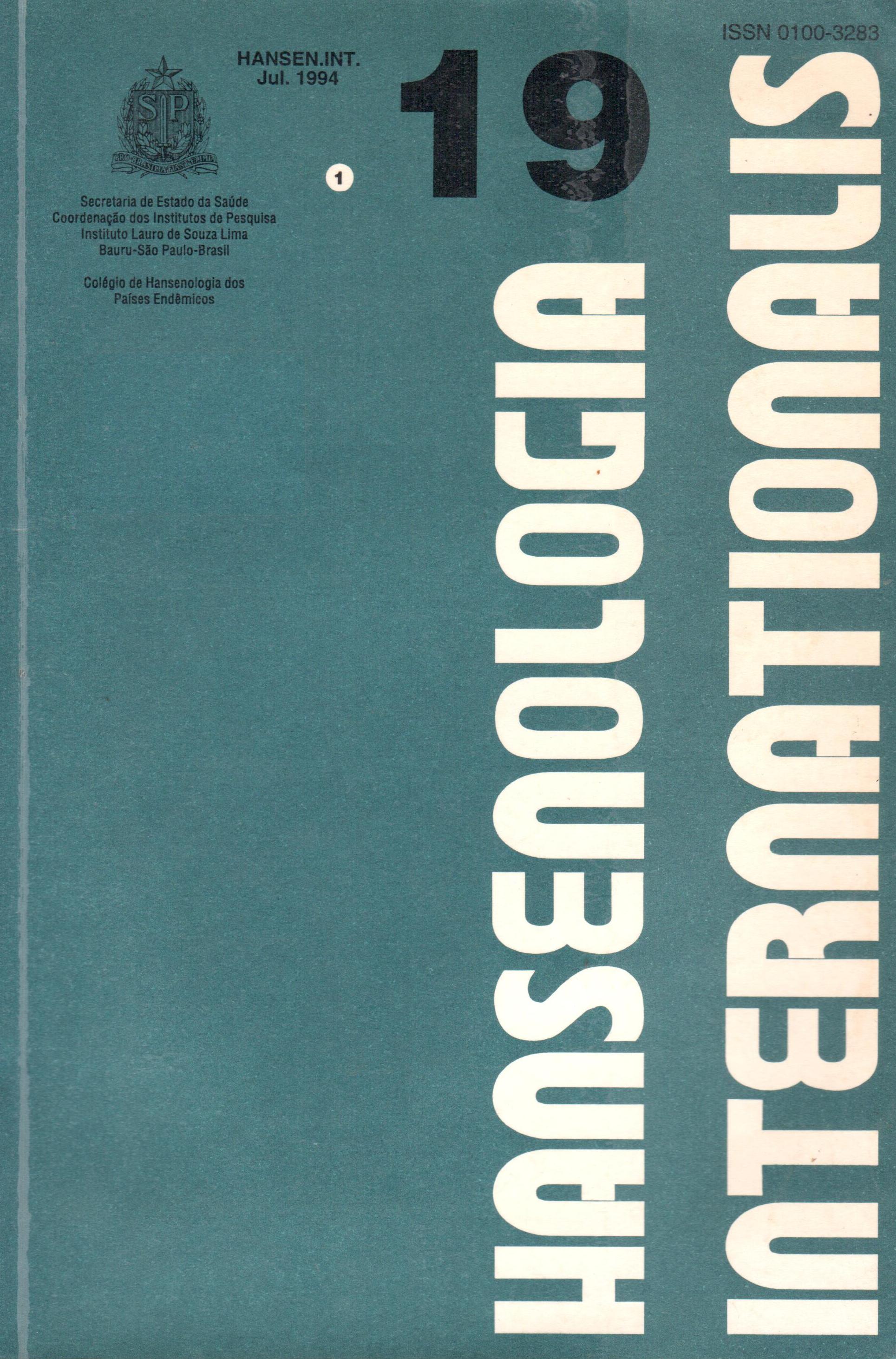Abstract
A woman, eighty eight years old, was admitted in the "Lauro de Souza Lima" Institute presenting acute, large, erithematous "BT' plaques in her body. She was previously admitted at the Institute in 1935, forty years ago, presenting similaralthough less intense lesions that disappeared spontaneously after 2 years. In the first reactional episode bacilli were found only in a linphnode punction. During the second reaction bacilli could be found in all lesions. Histopathology showed tuberculoid granulomas in both episodes. Usually, this sort of acute phenomenon has a duration of several months and the gap between the first and the next is from 2-3 months to several years (5 years in a case described by Wade). In our case the interval between the two eruptions was extremely large, 40 years! We may consider in this case the possibility of a reinfection but it is difficult to admit this fact due to the type of the new lesions observed and the appearance of some lesions near the site of the former ones. We believe that it is easier to accept the hypothesis of a relapse. In this sense, we believe that persisting bacilli multiply after 40 years, are destroyed, in part or totally, by the immune system and resultant antigens elicit a delayed hypersensitivity reaction presenting acute cutaneous lesions as clinical expression. If this is true, we can extrapolate this fact to explain all the reversal reactions °cuffing before, during and after treatment. Thus, after completion of treatment, there is no need to differentiate between reversal reaction and relapse and, moreover, it will be necessary to reappraise the effect of chemoterapy in such cases.
References
2. GROSSET, J.H. Recent developments in the field of multidrug therapy and future research in chemotherapy of leprosy. Leprosy Rev., 57, p. 223-234, 1986. Supplement 3.
3. LACAZ, C.da S., PORTO, E. & MARTINS,J.E.C. Micologia Médica São Paulo: Sarvier, 85.Ed., 1991, pg. 263-264.
4. LIMA, L. DE S.& CAMPOS, N.DE S. Lepra tuberculoide: estudo clinico-histopatológico. Sao Paulo: Renascença, 1947.
5. LOWE, J. A study of macules in nerve leprosy with particular reference to the tuberculoid macule. Leprosy in India, V 8, n. 3, p.97- 112, July, 1936.
6. NAAFS, B. Reactions in leprosy. Biol. Mycobac., 3, p.360-402, 1989.
OPROMOLLA, D.V.A. & FLEURY, R.N. Classification of leprosy. In: INTERNATIONAL LEPROSY CONGRESS, 110., Mexico City, 13-18/1978. Proceedings. Amsterdan: Excerpta Medica, 1980, p. 254- 260.
8. ROSEMBERG, J. Quimioterapia da tuberculose. Rev. Assoc. Med. Bras., v.29, n5/6, p.90-100, maio/junho, 1983.
9. WADE, H. W. & RODRIGUEZ, J.N. Borderline tuberculoid leprosy. Int. J. Leprosy, v.8, n.3, p.307-332, July-September, 1940.
10. W ADE, H.W . & RODRI GUE Z, J. N. Development of major tuberculoid leprosy. Int. J. Leprosy, v.7. n.3, p.237-340, July- September,
1939,
11. WADE, H.W. Tuberculoid changes in leprosy. II. Lepra reaction in tuberculoid leprosy. Int. J. Leprosy, v.2, n3, p. 279-292, August- October, 1943.
This journal is licensed under a Creative Commons Attribution 4.0 International License.
